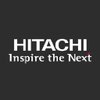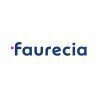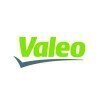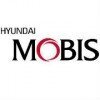Filter interviews by
JTEKT Interview Questions and Answers
62 Interview questions
I address customer complaints by actively listening, empathizing, and providing effective solutions to ensure satisfaction.
Listen actively to understand the customer's concerns fully.
Empathize with the customer to show that their feelings are valid.
Provide a clear and concise explanation of the steps to resolve the issue.
Follow up with the customer after resolution to ensure satisfaction.
Example: When a client rep...
Statistical Process Control (SPC) uses statistical methods to monitor and control processes, ensuring consistent quality.
SPC involves using control charts to track process performance over time.
Common types of control charts include X-bar, R, and p-charts.
SPC helps identify variations in processes, distinguishing between common and special causes.
For example, a manufacturing line may use SPC to monitor the diamete...
Petrol is more volatile and flammable than diesel, making it more dangerous in terms of fire hazards and explosions.
Petrol has a lower flash point (around 30°C) compared to diesel (around 60°C), making it easier to ignite.
Petrol vapors are more flammable and can form explosive mixtures with air, increasing the risk of fire.
In case of spills, petrol evaporates quickly, creating a hazardous environment, while diesel...
Diagnosing and resolving machine breakdowns involves systematic troubleshooting and effective communication.
Identify the symptoms: Check for unusual noises, vibrations, or error codes.
Gather information: Consult machine logs and maintenance records for previous issues.
Isolate the problem: Use diagnostic tools to pinpoint the faulty component, such as a multimeter for electrical issues.
Implement a solution: Replace...
Friction is the resistance encountered when two surfaces slide against each other, affecting motion and energy efficiency.
Friction can be static (preventing motion) or kinetic (resisting motion).
Static friction is what keeps an object at rest until a certain force is applied.
Kinetic friction occurs when two surfaces are sliding against each other, like a sled on snow.
Friction is influenced by the materials in cont...
Compliance rules ensure that businesses adhere to laws and regulations in their operations, particularly in EXIM activities.
Compliance rules vary by country and industry, e.g., export licensing requirements in the U.S.
They include regulations like the Export Administration Regulations (EAR) and International Traffic in Arms Regulations (ITAR).
Non-compliance can lead to severe penalties, including fines and restric...
I am seeking new challenges and opportunities for growth that align with my career goals and aspirations in purchasing management.
Desire for professional growth: I want to expand my skills and take on more leadership responsibilities.
Seeking a better cultural fit: My current organization has a different vision than my own, and I believe a new environment would be more conducive to my values.
Looking for new challen...
There are various types of motors used in different applications, such as AC motors, DC motors, synchronous motors, and induction motors.
AC motors are commonly used in household appliances and industrial applications.
DC motors are often used in battery-operated devices and electric vehicles.
Synchronous motors are used in applications where precise speed control is required, such as in clocks and timers.
Induction m...
A transformer is a device that transfers electrical energy between two or more circuits through electromagnetic induction.
Transformers are used to increase or decrease voltage levels in electrical circuits.
There are two main types of transformers: step-up transformers and step-down transformers.
Step-up transformers increase voltage levels, while step-down transformers decrease voltage levels.
Examples of transforme...
Stress is the force applied to a material, while strain is the resulting deformation or change in shape.
Stress is a measure of the internal resistance of a material to deformation under an applied force.
Strain is the measure of the deformation or displacement of material in response to stress.
Stress is typically measured in units of force per unit area (such as N/m^2 or Pa), while strain is dimensionless.
Stress ca...
JTEKT Interview Experiences
74 interviews found
I applied via Company Website and was interviewed in Nov 2024. There were 4 interview rounds.
(2 Questions)
- Q1. What is your name.
- Ans.
My name is John Doe.
Full name is John Doe
First name is John
Last name is Doe
- Q2. What type of machine are you referring to?
- Ans.
The type of machine being referred to could be any machine related to the field of ITI Fitter, such as lathe machine, milling machine, drilling machine, etc.
Lathe machine
Milling machine
Drilling machine
Grinding machine
Shaping machine
(2 Questions)
- Q1. What is your company name
- Ans.
Our company name is XYZ Engineering Pvt. Ltd.
XYZ Engineering Pvt. Ltd. is a leading provider of engineering solutions
The company specializes in ITI Fitter services
XYZ Engineering Pvt. Ltd. has been in operation for 10 years
- Q2. What is your city of residence?
- Ans.
I currently reside in the bustling city of Mumbai, known for its vibrant culture and fast-paced lifestyle.
Mumbai is the financial capital of India
Known for its diverse culture and heritage
Home to Bollywood, the Hindi film industry
(2 Questions)
- Q1. What is your department?
- Ans.
I work in the maintenance department as an ITI Fitter.
Responsible for repairing and maintaining machinery and equipment
Performing routine inspections to identify and fix issues
Collaborating with other departments to ensure smooth operations
- Q2. What type of work are you referring to?
- Ans.
The type of work I am referring to is related to the tasks and responsibilities of an ITI Fitter.
ITI Fitters are responsible for assembling, installing, and maintaining machinery and equipment.
They work with tools and machines to ensure proper functioning of mechanical systems.
ITI Fitters may also be involved in troubleshooting and repairing mechanical issues.
They need to have a good understanding of technical drawings...
(2 Questions)
- Q1. What is your current status?
- Ans.
I am currently employed as an ITI Fitter at XYZ Company.
Employed as an ITI Fitter at XYZ Company
Working on various mechanical components and machinery
Responsible for maintenance and repair tasks
- Q2. What type of machine are you referring to?
- Ans.
The type of machine being referred to could be any machine related to the field of ITI Fitter, such as lathe machine, milling machine, drilling machine, etc.
Lathe machine
Milling machine
Drilling machine
Grinding machine
Shaping machine
I applied via LinkedIn and was interviewed in Nov 2024. There were 2 interview rounds.
(2 Questions)
- Q1. How change your previous company
- Ans.
I implemented new production processes and technologies to improve efficiency and quality.
Introduced automated systems to streamline production processes
Implemented lean manufacturing principles to reduce waste and improve productivity
Led training sessions for employees to ensure smooth transition to new processes
Collaborated with cross-functional teams to identify areas for improvement
- Q2. Over experience and filed and achievements
(2 Questions)
- Q1. Question as par roll and documents related
- Q2. Working and behaviour related
Interview Preparation Tips
(2 Questions)
- Q1. Mechanical properties of material
- Ans.
Mechanical properties of materials refer to their ability to withstand applied forces without failure.
Mechanical properties include strength, hardness, toughness, ductility, and elasticity.
Strength is the ability of a material to withstand an applied force without failure.
Hardness is the resistance of a material to deformation or scratching.
Toughness is the ability of a material to absorb energy and plastically deform ...
- Q2. What is difference between stress and strain.
- Ans.
Stress is the force applied to a material, while strain is the resulting deformation or change in shape.
Stress is a measure of the internal resistance of a material to deformation under an applied force.
Strain is the measure of the deformation or displacement of material in response to stress.
Stress is typically measured in units of force per unit area (such as N/m^2 or Pa), while strain is dimensionless.
Stress can cau...
I appeared for an interview in Jan 2025.
(2 Questions)
- Q1. What is type of motor
- Ans.
There are various types of motors used in different applications, such as AC motors, DC motors, synchronous motors, and induction motors.
AC motors are commonly used in household appliances and industrial applications.
DC motors are often used in battery-operated devices and electric vehicles.
Synchronous motors are used in applications where precise speed control is required, such as in clocks and timers.
Induction motors...
- Q2. What is transformer and types
- Ans.
A transformer is a device that transfers electrical energy between two or more circuits through electromagnetic induction.
Transformers are used to increase or decrease voltage levels in electrical circuits.
There are two main types of transformers: step-up transformers and step-down transformers.
Step-up transformers increase voltage levels, while step-down transformers decrease voltage levels.
Examples of transformers in...
Interview Preparation Tips
I appeared for an interview in Apr 2025, where I was asked the following questions.
- Q1. Grinding machine
- Q2. Induction hardening
- Q3. 7QC TOOL TPM
- Q4. 5s, abnormality
I applied via Recruitment Consulltant and was interviewed in Aug 2024. There were 2 interview rounds.
(2 Questions)
- Q1. Self introduction
- Q2. Why you want to join jtekt
- Ans.
I want to join JTEKT because of their reputation for innovation and commitment to excellence in the production engineering field.
JTEKT has a strong reputation for innovation and cutting-edge technology in the production engineering industry.
I am impressed by JTEKT's commitment to excellence and continuous improvement in their products and processes.
I believe that working at JTEKT will provide me with valuable opportuni...
(2 Questions)
- Q1. What is 7 QC
- Ans.
7 QC is a set of quality control tools used in manufacturing to identify and solve production problems.
7 QC stands for Seven Quality Control tools
These tools include Pareto analysis, cause-and-effect diagram, check sheet, control chart, histogram, scatter diagram, and flowchart
They are used to analyze data, identify root causes of problems, and make informed decisions for process improvement
- Q2. What is ppl and pplh
- Ans.
PPL stands for Production Per Labour and PPLH stands for Production Per Labour Hour.
PPL is a measure of how much production is achieved per unit of labor input.
PPLH is a measure of how much production is achieved per labor hour.
Both metrics are used to evaluate the efficiency of production processes.
For example, if a factory produces 100 units with 10 workers, the PPL would be 10 units per worker.
If the same factory op...
I appeared for an interview in Mar 2025, where I was asked the following questions.
- Q1. What is friction
- Ans.
Friction is the resistance encountered when two surfaces slide against each other, affecting motion and energy efficiency.
Friction can be static (preventing motion) or kinetic (resisting motion).
Static friction is what keeps an object at rest until a certain force is applied.
Kinetic friction occurs when two surfaces are sliding against each other, like a sled on snow.
Friction is influenced by the materials in contact; ...
- Q2. How to to solve a problem when machine in a break down
- Ans.
Diagnosing and resolving machine breakdowns involves systematic troubleshooting and effective communication.
Identify the symptoms: Check for unusual noises, vibrations, or error codes.
Gather information: Consult machine logs and maintenance records for previous issues.
Isolate the problem: Use diagnostic tools to pinpoint the faulty component, such as a multimeter for electrical issues.
Implement a solution: Replace or r...
- Q3. What is Pneumatic circuit and hydraulic circuit
- Ans.
Pneumatic circuits use compressed air for power, while hydraulic circuits use pressurized liquids for force transmission.
Pneumatic circuits are commonly used in automation systems, like conveyor belts.
Hydraulic circuits are often found in heavy machinery, such as excavators.
Pneumatics are generally faster and cleaner, while hydraulics provide more force.
Examples of pneumatic tools include air drills and impact wrenches...
I appeared for an interview in Mar 2025, where I was asked the following questions.
- Q1. What is your daily routine .
- Q2. What is your job responsibilities
I appeared for an interview in Nov 2024, where I was asked the following questions.
- Q1. General profile and introduction
- Q2. Previous work experience and way of working in previous organisation
- Ans.
My previous work experience involved leading teams, optimizing processes, and driving project success in a collaborative environment.
Leadership: I led a team of 10 in my last role, successfully completing projects ahead of schedule by implementing agile methodologies.
Process Optimization: I identified bottlenecks in our workflow, which resulted in a 20% increase in efficiency by streamlining communication channels.
Cros...
- Q3. About management structure of the previous organisation
Interview Preparation Tips
I applied via Naukri.com and was interviewed in Mar 2024. There was 1 interview round.
(5 Questions)
- Q1. What is quality, what is production, what is TPM
- Ans.
Quality is meeting or exceeding customer expectations, production is the process of creating goods or services, TPM is Total Productive Maintenance.
Quality is the degree to which a product or service meets customer requirements and expectations.
Production is the process of converting raw materials or components into finished goods or services.
TPM (Total Productive Maintenance) is a proactive approach to maintenance tha...
- Q2. 5s , kizine, poka yoka, production planning,
- Q3. What is quality in a company
- Ans.
Quality in a company refers to meeting or exceeding customer expectations through consistent and reliable products or services.
Quality is about meeting customer expectations and delivering products or services that consistently meet or exceed those expectations.
It involves ensuring that products or services are reliable, consistent, and free from defects.
Quality also includes factors such as customer satisfaction, comp...
- Q4. What is quality in 3 words
- Ans.
Meeting customer expectations
Customer satisfaction
Consistency in performance
Continuous improvement
- Q5. What is a quality example
- Ans.
A quality example is when a product meets or exceeds customer expectations in terms of performance, reliability, and durability.
Consistent product performance under various conditions
High level of reliability with minimal defects
Long-lasting durability exceeding expected lifespan
Interview Preparation Tips
Thank u
Top trending discussions






JTEKT Interview FAQs
The duration of JTEKT interview process can vary, but typically it takes about less than 2 weeks to complete.
Tell us how to improve this page.
JTEKT Interviews By Designations
- JTEKT Diploma Trainee Engineer Interview Questions
- JTEKT Production Engineer Interview Questions
- JTEKT Senior Engineer Interview Questions
- JTEKT Production Interview Questions
- JTEKT Assistant Manager Interview Questions
- JTEKT Quality Engineer Interview Questions
- JTEKT Maintenance Engineer Interview Questions
- JTEKT Junior Engineer Interview Questions
- Show more
Interview Questions for Popular Designations
Overall Interview Experience Rating
based on 84 interview experiences
Difficulty level
Duration
Interview Questions from Similar Companies
|
Diploma Trainee Engineer
287
salaries
| ₹1.5 L/yr - ₹3.3 L/yr |
|
Junior Engineer
265
salaries
| ₹1.8 L/yr - ₹4.5 L/yr |
|
Section Engineer
185
salaries
| ₹3.5 L/yr - ₹7.4 L/yr |
|
Assistant Manager
180
salaries
| ₹5.7 L/yr - ₹11.7 L/yr |
|
Senior Engineer
157
salaries
| ₹4.5 L/yr - ₹9.3 L/yr |

Bosch

Hitachi Astemo

Faurecia

Valeo
- Home >
- Interviews >
- JTEKT Interview Questions













